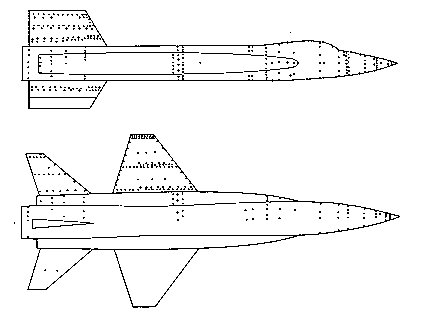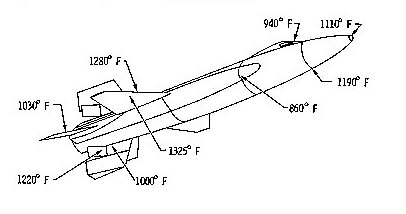
|
| These dramatic photographs of free-flight models of the X-15 being fired into a wind Tunnel vividly detail the ahock-wave patterns for airflow at Mach 3.5 (above) and at Mach 6 (below). |

|

|
| These dramatic photographs of free-flight models of the X-15 being fired into a wind Tunnel vividly detail the ahock-wave patterns for airflow at Mach 3.5 (above) and at Mach 6 (below). |

|

|
| The well-dotted sketches above indicate locations of hundreds of research and systems sensors aboard the X-15. The sensors measure pressures, temperatures, strains, accelerations, velocities, control positions, angles, and physiological data. The outline drawing below shows maximum temperatures that the X-15 has experienced to date, and where they were recorded. |

|

| One of the many tools of the X-15's research is this multiple-probe pressure rake, mounted on the forward fuselage to measure boundary-layer airflow at hypersonic speeds. Below the rake is one of the 140 holes cut in the aircraft's skin to measure surface pressures. Above and behind the rake is a pressure probe, used only during landing, for the pilot's airspeed indicator. |


